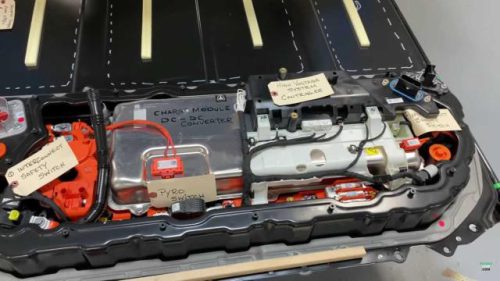
Welcome to another Tesla Tuesday!
Range is a key factor when picking an EV. Until superchargers are as ubiquitous as today’s gas stations, EVs do require extra planning. So how much range do you need?
For normal daily use, the only factor to consider is whether you will comfortably make it home at the end of the day so it can charge overnight. I underestimated how much I would love knowing that my “tank” was full every single morning! On a road trip the range can impact how many stops you make along the way.
Just like in a gas car, your driving style can dramatically impact your range. We average around 250 Wh/mi (watt hours per miles) which means our 75KWh battery is good for 300miles. The EPA estimated range is 330 miles, but that number always seems to be high for all cars.
As the car gets older, the batteries are going to lose some effectiveness. There are lots of studies about this, but data suggests that we’ll lose 5% of our range after 50,000 miles and then another 5% by the time we hit 150,000-200,000 miles. At 50,000 miles, our range will be an estimated 285 miles of real-world driving.
Most current battery technologies do not like to be charged up to 100% or drained to 0% (though Tesla has some models that do like to be charged to 100%.) The Tesla manual suggests charging to 90% and not draining below 10% for regular use. This knocks our 285-mile range down to 228 miles.
It’s not just driving that will impact your range. The car is using battery all the time. Teslas all can record from four cameras around the car while they are parked, and your battery management system might be running various fans to heat or cool the battery. If your day involves a lot of sitting in parking lots, plan for another one mile of loss per hour. There’s also a feature called “Cabin Overheat Protection” which makes sure the temperature in your car never gets above 105. If you have that enabled on a sunny day, you’ll be losing battery to run the air conditioner. Let’s assume we’re parked in the hot sun at work all day and knock off another 15 miles. That brings our example down to 213miles.
Heating and cooling the passenger compartment can use a significant amount of energy too so you’ll want to build in some buffer for that as well.
We put about 75-85 miles per day on the car so ~200 miles of range is plenty. It gets charged up every night and we’re ready to go the next day. The only time I really think about range is when we’re taking a longer trip.
So why am I sharing all this? It may sound like I’m hating on EVs, but my goal is to encourage you to get the biggest battery you can get if you’re thinking about an EV. Even if you’re only planning to use it for your normal daily routine, take your normal daily mileage and double it. Use that number when you’re considering various vehicles. Assume you’re only going to comfortably get ~1/2 to 2/3 of the EPA rated range.
We don’t think about this as much with gas cars because it’s easier to stop and fill them randomly. But on the flip side, if current battery ranges are more than enough for almost everyone’s daily commute, would the market really going to pay for even bigger batteries? What’s the incentive for car companies to shove bigger batteries in the car when that’s already a huge part of the cost of the car? A better fix is getting people to realize that they have more than enough battery for daily use and getting the fast-charging network built out more for long trips. This whole post will probably feel silly in 20 years.
